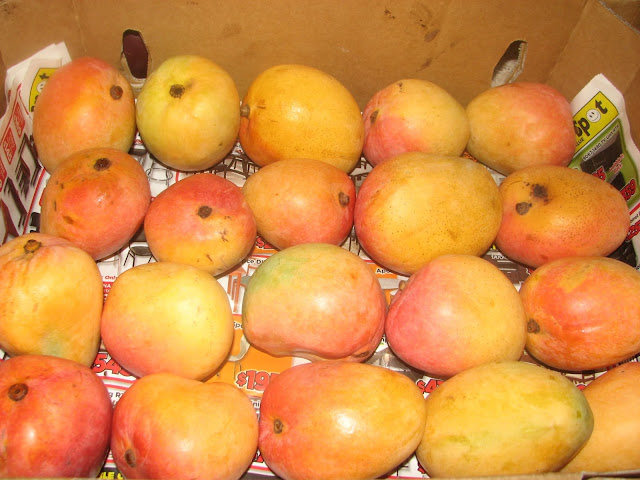|
Ingredients for DEHYDRATED MANGO
|
|
|
|
Yield: around
120g
|
|
Mangoes (any variety)
|
900g
|
METHOD:
1. Before you begin: disconnect the dehydrator
from the power point. Clean dehydrator as per dehydrator manual i.e. cleaning racks,
base and fruit roll trays in warm, mild soapy water, rinse and dry each part thoroughly.
Wipe lid and frames with a damp, soft sponge with a mild detergent. Do not use
steel wool, scouring pads or abrasive cleaners. Do not place any parts in a
dishwasher. Always follow the dehydrator manual instructions. Ensure the
dehydrator is unplugged before reassembling. Ensure hands, utensils and food
preparation areas are clean before preparing food.
2. Wash mangoes.
3. Peel mangoes
with a vegetable peeler.
4. Remove any
bruised/damaged fruit.
5. Slice mangoes
5mm thick (1/4 inch). A mandolin is helpful to create even slices, or cut them by
knife if preferred. Try to keep all slices the same thickness so they
dehydrate at the same rate. Mangoes can be cut thicker, but again, the same
thickness for all pieces. The thicker they are, the longer it will take to dehydrate
the mango pieces.
Mangoes can be cut into long slices, small pieces,
or diced if you prefer.
TIP: Set aside small pieces of mango, pulp etc to
make jam or mango fruit leather.
6. Place
sliced mangoes onto dehydrator trays, leaving a little space around each piece
to allow air circulation.
7. Place dehydrator trays onto the base (or into
the dehydrator frame), alternating the directions with each tier for round
models and ensuring all racks/shelves are securely positioned.
8. Place the lid on the top drying rack (or close
the door for square-shaped units).
9. Plug the power cord into a power outlet and
set the dehydrator temperature to 55°C (130°F)
and timer to 8-12 hours (depending on the fruit thickness and dehydrator
model, this time may vary).
10. Rotate racks on round dehydrators every 2-3
hours to ensure all racks dry evenly.
11. Cool dehydrated mangoes completely (to room
temperature) before placing into storage containers or bags.
12. Test mangoes have dried properly by cutting a
piece open. There should be no moisture visible inside. Mangoes will be
pliable, crack or flake, depending on the thickness and time dehydrated.
13. Store dehydrated mangoes in an airtight jar,
container or vacuum sealer bag in the pantry (short term), refrigerator or
freezer, at a temperature of 5-20°C (40-70°F). Check for moisture forming on
the container during the first week after drying – if moisture appears, food
has not been dried enough and needs to be dehydrated further (or frozen). Dried
food can also be covered in plastic wrap (or vacuum sealed) and stored in a
freezer safe container.
For long-term
storage, refrigeration or freezing is recommended.
14. Enjoy dehydrated mangoes dry
or rehydrate by soaking in water (or adding to dishes during cooking).
o Any variety of mango can be used in this recipe;
o Slightly underripe mangoes can be used, as long as
a little flavour is present in the fresh fruit because the flavour (and
sweetness level) will concentrate when fully dehydrated;
o Flavour with some orange juice (or make it spicy by
sprinkling with chilli powder).
SERVING IDEAS:
o Trail mix;
o Dip dried mango partially into dark chocolate;
o Serve with dried pineapple, dried banana and some
dried coconut (this can be rehydrated together too).
Author:
Megan Radaich
Image Credit: Megan Radaich
Learn More: Orchard Fresh Fruit Preserving Guide


